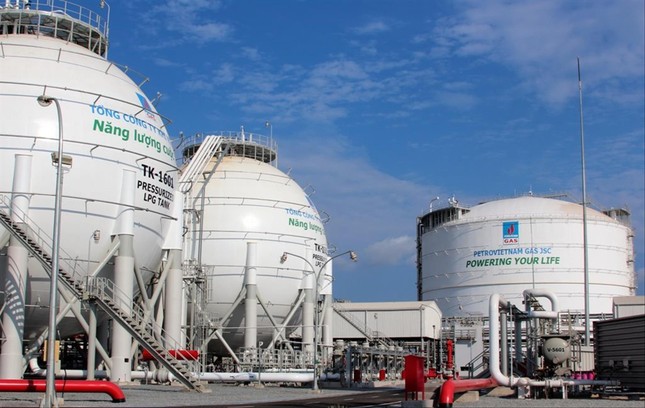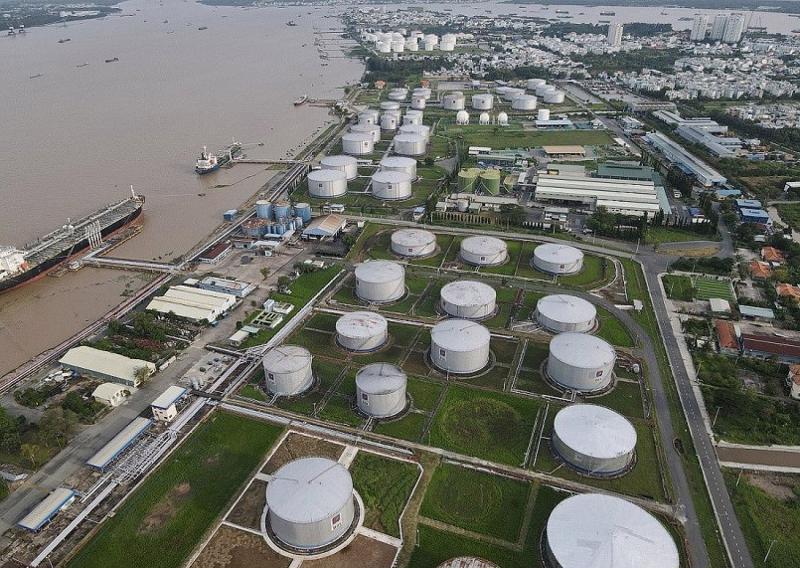In a decisive move to bolster its energy resilience, Vietnam has just unveiled a robust Roadmap for the Implementation of the National Master Plan for Petroleum and Gas Supply and Reserve Infrastructure for the 2021-2030 period, with a visionary outlook extending to 2050.
Approved by Prime Minister Pham Minh Chinh, this comprehensive blueprint underscores the nation's unwavering commitment to bolstering its strategic fuel reserves and optimizing the supporting infrastructure crucial to ensuring a reliable and uninterrupted supply of petroleum products and natural gas.
The lynchpin of this ambitious undertaking is a meticulously crafted action plan that outlines a multifaceted approach to achieving the overarching objectives.
Foremost among its priorities is heightening awareness and instilling a profound sense of responsibility across all stakeholders for the steadfast implementation of Decision No. 861/QD-TTg, a pivotal decree issued in July 2023 that formally endorsed the National Master Plan.
Forging Synergies, Optimizing Resources Underpinning
This endeavor is a robust framework that harmonizes the endeavors of ministries, state agencies, and provincial administrations.
It fosters seamless coordination, ensuring a judicious allocation of resources and a synergistic pursuit of the nation's energy security imperatives.
The roadmap's formulation was a collaborative effort, reflecting an unwavering commitment to upholding transparency and engaging all relevant entities in a comprehensive dialogue.
A key tenet of the roadmap is the prioritization of public investment in fortifying the infrastructure essential for maintaining strategic national reserves.
However, it also actively encourages private sector participation, incentivizing enterprises to partake in the construction of storage facilities that adhere to the stringent standards mandated for strategic stockpiling purposes.
This approach not only diversifies the sources of investment but also catalyzes a broader array of stakeholders to contribute to the collective pursuit of energy security.

Integrating Energy Objectives with Sustainable Land Management
Recognizing the intrinsic link between energy infrastructure and land utilization, the roadmap undertakes a meticulous assessment of the nation's land-use planning.
It meticulously integrates the development of petroleum and gas reserve facilities into provincial master plans, ensuring a harmonious alignment between energy imperatives and sustainable land management practices.
This strategic integration extends to the formulation of provincial five-year land-use plans, fostering a seamless synchronization of energy objectives with localized development trajectories.
This multifaceted strategy is a suite of targeted measures aimed at optimizing the legal and regulatory frameworks governing the sector.
These include a comprehensive review and proposed amendments to existing laws and regulations, with a view towards stimulating investment in reserve and supply infrastructure.
Moreover, the roadmap envisages the refinement of national technical standards and norms pertaining to the design, environmental safeguards, fire safety, and emergency response protocols for petroleum and gas facilities, ensuring an unwavering commitment to operational excellence and public safety.
Catalyzing Private Local and Foreign Capital
Cognizant of the financial implications, the blueprint advocates a judicious allocation of state budgetary resources to fulfill the nation's strategic reserve obligations for crude oil, petroleum products, and natural gas.
Concurrently, it actively promotes the diversification of investment modalities, catalyzing an influx of domestic and foreign capital into the development of supply and reserve infrastructure.
This multifaceted approach to resource mobilization is poised to yield a potent synergy, optimizing the utilization of public funds while harnessing the dynamism of private sector investment.
Underscoring the imperative of environmental stewardship, the roadmap articulates a steadfast commitment to the adoption of cutting-edge technologies and sustainable practices.
It envisages a vigorous pursuit of research, application, and technology transfer initiatives, empowering Vietnam to spearhead the development and deployment of innovative solutions that harmonize energy security with ecological preservation.
Moreover, it espouses the comprehensive integration of digital transformations, leveraging the Internet of Things, cloud computing, artificial intelligence, and blockchain technologies to enhance operational efficiency, mitigate environmental impacts, and fortify safety protocols.

Nurturing Expertise, Catalyzing Excellence
Recognizing the inextricable nexus between human capital and national development, the roadmap places a strong emphasis on nurturing a proficient workforce.
It mandates the implementation of robust training programs and capacity-building initiatives, nurturing a cadre of skilled professionals adept in the realms of design, construction, and operational management of storage and transportation systems.
This strategic investment in human resources is poised to catalyze a virtuous cycle of innovation and operational excellence, positioning Vietnam as a formidable force in the global energy arena.
In a testament to its commitment to international cooperation, the blueprint advocates an intensification of Vietnam's engagement with strategic partners, multilateral organizations, and industry consortia.
This global outreach is envisioned not only to facilitate knowledge sharing and technology transfers but also to unlock avenues for strategic collaborations and joint ventures, thereby propelling Vietnam's ascent as a nexus of energy expertise within the region and beyond.
Safeguarding National Imperatives, Ensuring Societal Wellbeing
Underpinning this multidimensional strategy is an unwavering resolve to safeguard national defense and social welfare imperatives.
The roadmap prioritizes the development of reserve and supply infrastructure in border regions, remote areas, and island territories, ensuring that the nation's energy needs are met without compromising its territorial integrity or leaving any community disenfranchised.
This holistic approach underscores Vietnam's recognition of the inextricable linkages between energy security, national resilience, and societal wellbeing.
As Vietnam navigates the intricate geopolitical and economic landscapes of the 21st century, this meticulously crafted roadmap stands as a resolute testament to the nation's steadfast commitment to fortifying its energy security.
By harmonizing public and private endeavors, fostering technological innovation, and nurturing a proficient workforce, Vietnam is poised to surmount the challenges that lie ahead and emerge as a paragon of sustainable energy stewardship on the global stage.









 Google translate
Google translate